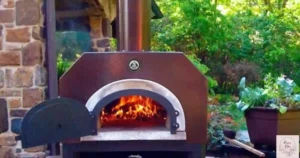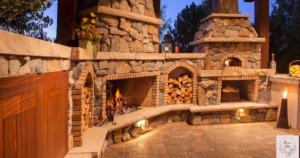Few things motivate the senses, like a clay oven in the realm of gastronomic pleasures and traditional cooking methods. These old and time-honored structures have a rich history and are intimately linked to different foods all around the world.
For generations, a clay oven, or tandoor, has been used for baking Naan, attaining a unique flavor and texture through high heat and fuel. This approach outperforms traditional ovens in terms of health advantages while preserving the Naan’s genuine flavor and nutritional content.
In this post, we’ll go on a trip to discover the secrets of the clay oven, looking at its history, construction, and extraordinary link to one of the world’s most popular breads, Naan.
History and Origin
The Roots of Clay Oven Cooking
Clay ovens have a history as varied as the societies that have adopted them over millennia. These ovens, which date back to ancient civilizations, have survived the test of time as an example of human resourcefulness in using natural resources. While clay ovens have no single origin, they have been identified in historic locations throughout the Middle East, Europe, Asia, and even the Americas.
One of the earliest known clay ovens may be found in ancient Greece, where it was used to bake bread. The Romans eventually accepted this technology and improved it with their architectural and engineering achievements. The domed shape, which has come to be associated with clay ovens, was a Roman extra that allowed for equal heating and superior cooking outcomes.
A Global Culinary Influence
With time, the usage of clay ovens extended across continents, with each location adding its unique taste to the cooking process. The Tandoor, a cylindrical clay oven, became famous in India for its role in producing wonderful Tandoori dishes. Meanwhile, in Italy, the wood-fired brick oven evolved into the heart and soul of pizza-making, producing crispy, thin-crust masterpieces.
The clay oven became an important element of daily life in the Middle East, where it was used to make a variety of flatbreads and kebabs. Even in the Americas, indigenous peoples used clay ovens to bake maize-based foods, giving this old technology its unique spin.
Construction and Design
Crafting the Perfect Clay Oven
Building a clay oven is an art in and of itself, requiring a thorough grasp of materials and skill. These ovens are often made of clay, sand, and straw, which gives them a strong and heat-resistant construction.
The dome-shaped design of a clay oven is essential to its success. This design provides for optimal heat retention and variation, resulting in uniformly cooked food. The dome is built with clay layers and insulation materials to create a well-insulated chamber where the magic happens.
A foundation is prepared before applying the first layer of clay mixture to make the basis of a clay oven. Additional layers are added as the building advances, and the dome begins to take shape. After completion, the oven is left to dry and solidify, which might take many days.
The Deep Connection of Clay Ovens and Naan
Naan: A Brief Overview
Naan, the popular flatbread from the Indian subcontinent, has a close link with clay ovens. This unleavened bread is a favorite in many families and restaurants across the world due in part to the distinct flavors provided by clay oven baking.
Traditional naan dough is produced with simple components such as wheat, water, yogurt, and a small amount of salt. The cooking procedure, however, differentiates it. Something wonderful happens when the prepared dough is carefully slapped against the inside walls of a hot clay oven.
The Magic of Baking in a Clay Oven
The clay oven’s high, dry heat immediately puffs up the naan, generating trademark bubbles and a slightly destroyed surface. This quick cooking method produces a soft and chewy inside with a delicious contrast of textures that is hard to duplicate in a conventional oven.
The radiating heat from the clay walls infuses the bread with a delicate smokiness, increasing its taste profile. As the naan cooks in the clay oven, it absorbs the earthy smell of the clay, creating a one-of-a-kind and amazing gastronomic experience.
Why Clay Ovens Are Preferred for Naan
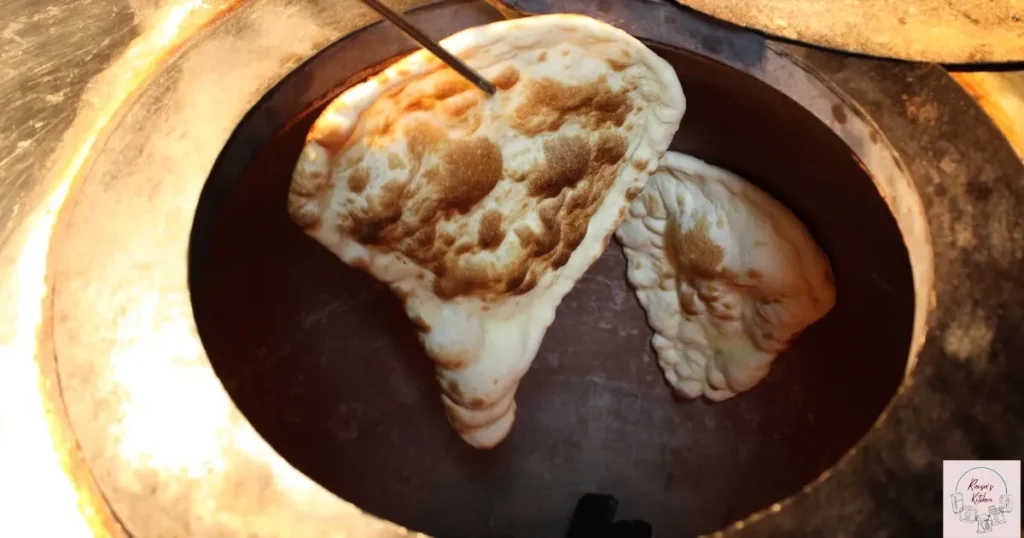
Uniform Heating
Uniform heating is critical to making the ideal naan, and clay ovens excel in this area. Clay ovens, unlike regular ovens with metal parts, heat evenly all over their round spaces. Because of the equal heat distribution, every inch of the naan receives the same amount of heat, resulting in consistent cooking.
The walls of a clay oven absorb and send heat, resulting in a temperature with few hot spots. This regular heating technique is essential for naan because it helps the bread to rise uniformly and produce the desired air pockets that give it a delicate, airy inside.
Authentic Taste
Authenticity is a characteristic of outstanding food, and clay ovens play an important part in giving naan an authentic flavor. The porous clay walls provide a unique flavor to the bread while it bakes. This earthy, smoky taste adds depth to the naan and differentiates it from naan baked in standard ovens.
The flavor of clay oven-baked naan is not the only thing that makes it genuine. Slapping the dough onto the inside walls of the clay oven is an art form in and of itself. The little charring and blistering that takes place during this procedure add to the naan’s aesthetic and sensory authenticity.
Crispy Exterior with Soft Interior
The pleasing contrast between a crispy outside and a soft, sensitive inside is one of the distinguishing qualities of superb naan. The ability of clay ovens to achieve this exact balance needs to be improved. The clay oven’s strong heat immediately crisps up the outside layer of the naan, resulting in a golden-brown, somewhat blistered crust.
Meanwhile, the inside remains soft and fluffy thanks to the clay oven’s uniform heating. This visual difference is what turns naan into a culinary marvel. The outside crispiness gives way to a soft, pillowy inside that melts in your mouth.
Different Types of Clay Ovens
Tandoor
Tandoors, or cylinder clay ovens, have a particular place in the hearts of naan lovers. The Tandoor, which originated in the Indian subcontinent, is built for high-temperature cooking. Its unique form facilitates the simple insertion of naan dough into the inner walls, where it bakes quickly, producing the trademark attributes of true naan.
Pita Bread Oven
While the Pita Oven is commonly linked with Middle Eastern cuisine and the creation of pita bread, it is also a multipurpose clay oven capable of producing excellent naan. Its flat, circular shape and open-mouthed structure make it ideal for baking a variety of flatbreads, including naan. The Pita Oven is a popular choice among bakers due to its steady heat and ability to maintain high temperatures.
Earth Oven
The Earth Oven, also known as a wood-fired oven or cob oven, is a lovely and rustic way to make naan. These ovens are made from a combination of clay, sand, straw, and occasionally even recycled materials. The Earth Oven’s capacity to maintain heat for extended periods makes it ideal for baking naan, resulting in a wonderful dish with a distinct flavor.
How to Use a Clay Oven for Baking Naan
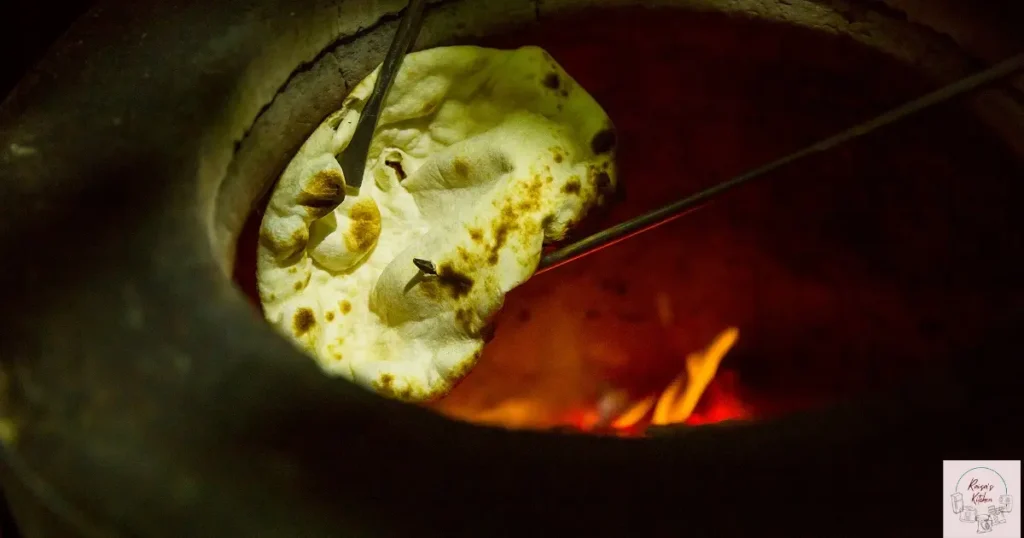
Preparing the Dough
Using a clay oven to bake naan begins with careful dough preparation. Naan dough is made with just four ingredients: wheat, water, yogurt, and a bit of salt. Here’s a step-by-step procedure:
Ingredients: Mix the cake flour and salt in a mixing dish. Add the water and yogurt gradually, mixing the dough until it is smooth and elastic. The yogurt provides tanginess and improves the texture of the naan.
Let it Rest: Cover the dough with a moist towel and set it aside for at least an hour. This cooling time enables the flour to relax, making it simpler to work with and producing a softer naan.
Divide and Shape:
- Once the dough has rested, divide it into tiny, equal-sized sections.
- Make each piece into a ball, then press it down to make it flat like a circle.
- Shape the naan with your hands or a rolling pin.
Heating the Oven
Before you begin baking, make sure the clay oven is sufficiently heated:
- Preheat: Begin by starting a fire inside the clay oven. Use dry firewood or charcoal because they burn cleanly and create the strong heat required for naan. Allow the fire to burn for at least an hour to warm the clay walls properly.
- Temperature Check: Place a little piece of dough on the interior wall of the oven to confirm it is at the proper temperature. If it sizzles and instantly begins to cook, the oven is ready. If not, leave it to cook for a little longer.
Baking Technique
Baking naan in a clay oven needs some skill:
- Slapping the Dough: Using somewhat damp hands, slap a portion of the prepared dough onto the inside walls of the clay oven. The dough should be able to get attached to the heated surface.
- Rotate and monitor: As the naan begins to cook, gently rotate it with a long, flat instrument, such as a wooden paddle. This promotes consistent frying and the signature air bubbles. Keep an eye on it since naan cooks fast in a hot clay oven.
- Take and Serve: When the naan has turned golden brown with crispy places, carefully take it from the oven with the same paddle or tongs. For a better flavor, brush the heated naan with melted butter or ghee.
Maintenance and Care of Clay Ovens
Using a clay oven for naan involves not just baking but also maintaining and caring for this one-of-a-kind cooking device to ensure its durability.
Regular Cleaning
It is critical to clean the clay oven after each use:
- Scrap any remaining dough or food particles off the interior walls of the oven with a brush or scraper. This keeps them from burning and harming future batches.
- Remove the ash and debris from the oven’s base if you use wood or charcoal. Excess ash might obstruct good heating.
Protecting from Excessive Moisture
Moisture can compromise the construction of clay ovens. To safeguard your oven, follow these steps:
- Cover When Not in Use: When not in use, use a waterproof cover to protect the clay oven from rain and humidity.
- Proper Storage: If you live in a particularly wet region, consider storing your clay oven in a dry, covered spot while not in use.
Repair and Longevity
Clay ovens may survive for years if taken care of properly, although they may need repairs from time to time:
- Repairing Cracks: If you detect cracks in the clay, you may repair them with a clay combination identical to the original building materials. If the damage is significant, seek the advice of a specialist.
- Resealing: To preserve the clay oven’s integrity, reseal it with food-safe glue on a regular basis.
FAQ’s
What precisely is a clay oven, and how does it vary from other ovens?
A clay oven, commonly known as a tandoor, is a traditional cooking device composed of clay or mud. It varies from conventional ovens in terms of both structure and heat output.
Why are clay ovens used exclusively to bake naan bread?
Clay ovens are great for baking naan bread because they can achieve extremely high temperatures, resulting in short cooking periods and the unique charred and chewy texture of naan.
What are the main components of a clay oven, and how do they affect the baking process?
A clay oven consists of a cylindrical body, a fire pit at the bottom, and a domed lid. These characteristics assist in retaining heat and produce the ideal atmosphere for baking naan bread.
How do you prepare a clay oven for making naan bread?
The clay oven is prepared to a high temperature, usually between 500 and 700 degrees Fahrenheit, by burning wood or charcoal in the fire pit at the bottom.
What is the appropriate temperature for baking naan in a clay oven?
The best temperature for baking naan in a clay oven is between 500 and 700 degrees Fahrenheit, resulting in quick cooking and a crispy crust.
Can other breads beyond naan be made in a clay oven?
Yes, a clay oven can cook a wide range of breads and other foods, including tandoori roti, kebabs, and pizza.
Are there any unique procedures or instruments required to bake naan in a clay oven?
Yes, naan is often stretched and slapped against the inside wall of the clay oven with a tool known as a gaddi or pillow, leaving it to cook rapidly and evenly.
How long does it take to bake naan in a clay oven, and what are the signals when it’s done?
Naan bread typically cooks in a clay oven for a few minutes and is done when it puffs up and acquires golden brown patches on the surface.
Can clay ovens be used indoors, or are they typically outside appliances?
Clay ovens can be used both indoors and outdoors, depending on their size and ventilation needs.
What are some suggestions for maintaining and caring for a clay oven used to bake naan?
To keep a clay oven in good condition, it must be cleaned on a regular basis, any cracks filled with fresh clay, and kept dry while not in use.
Conclusion
Finally, the clay oven, or tandoor, is essential in the production of the popular naan bread. Its strong heat and unique shape are responsible for the unique texture and flavor that naan fans appreciate. So, the next time you eat naan, remember the centuries-old history and artistry that went into its creation.
Explore more:
Learning Chicago Brick Oven Temperature
How long does it take to cook a pizza in a Chicago brick oven?
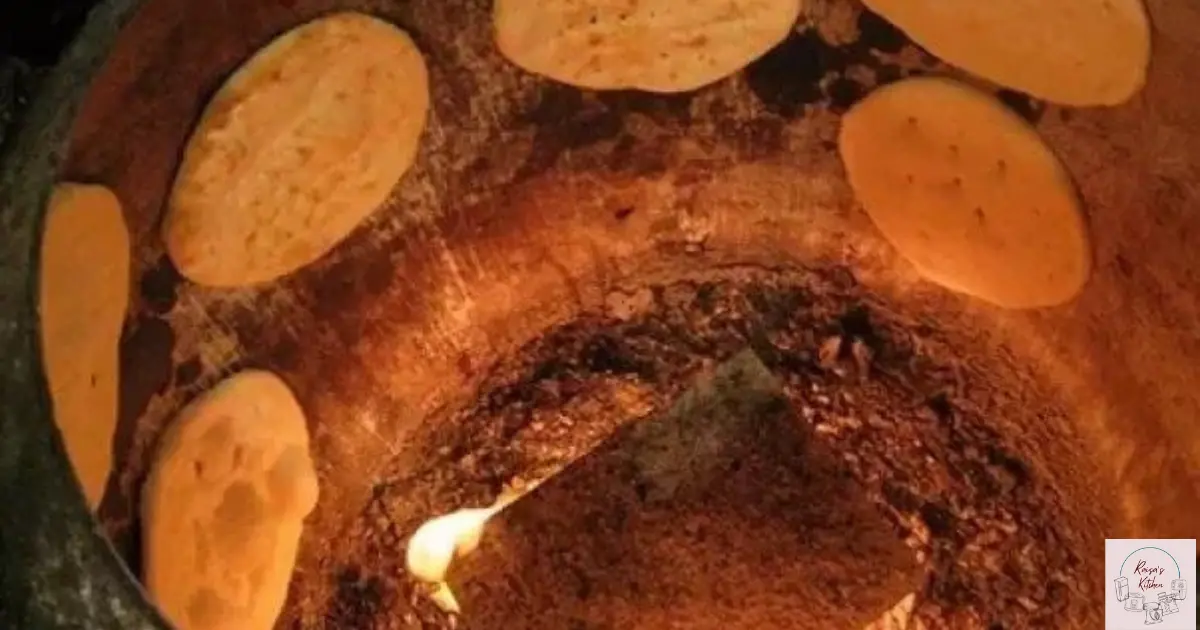
![Read more about the article How to Use Clay Oven for Baking Naan Breads? [Stepwise Guide]](https://raisaskitchen.com/wp-content/uploads/2024/02/How-to-Use-a-Clay-Oven-for-Baking-Naan-Breads-A-Step-by-Step-Guide-300x158.webp)
